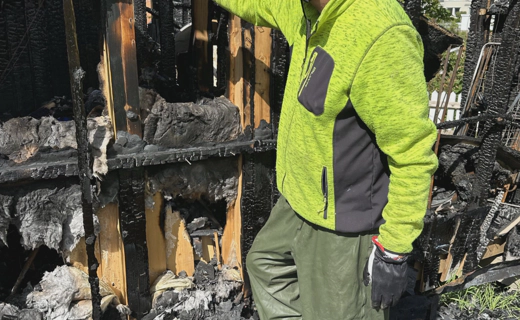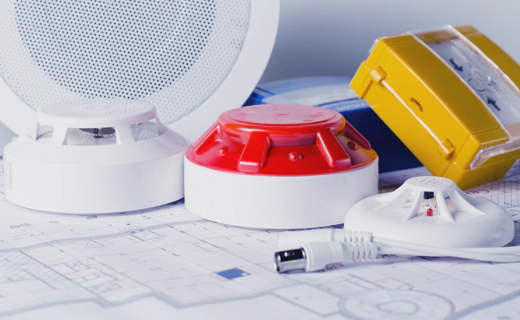Investigations after fires
2025-04-07 Academic News

Text: Anders Arnhus,
Senior consultant at PiD Solutions AS
The problem of extensive fire spread beyond the fire-affected apartment in row houses is known from previous investigations that PiD Solutions AS has carried out on behalf of insurance companies. Our assignment today was to examine the building and map fire barriers and, if possible, describe relevant paths of fire spread from the fire-affected apartment to the other apartments.

Investigation of the fire site
In such an investigation, it is important to collect relevant information about the construction method and about the fire barriers in apartment walls, - in cold attics, - eaves solutions vs. roof ventilation, etc. For us fire engineers, to investigate real fires is also an important learning area so that we can include this knowledge in our work as fire consultants.
We want to inspect the fire site as soon as it is released after the police’s crime scene investigations have been completed. It is important for us to see how the fire has affected load-bearing structures and the fire barriers, we record what the wind conditions were at the time of the damage and look for traces of wind-induced fire spread.
In fires that we have investigated, we see that the wind conditions have in some cases had a major impact on where and how the fire has spread in the building. The impact of the wind is interesting to include in the evaluations after investigations, as it turns out that fires can spread with the help of wind forces earlier than expected. Wind conditions are not included as a factor that must be taken into account according to requirements in the building regulations or other fire regulations, even though wind can have a major influence on the spread of fire.
Further work after the inspection
After the inspection, we continue to gather material information for the report. In this specific case, no conclusion was made at the site inspection. It is important to assess and test, as far as possible, different hypotheses for the mechanism that has led to the development of the fire, especially for this fire. The fire department’s efforts, the number of crews, the supply of extinguishing water, etc., and the situation when the fire department started the extinguishing effort are also of great interest to have access to in an evaluation. Here, conversations with emergency crews from the fire department and photo and video material will be of great use.
Evaluation and conclusion
Our assignment is to evaluate this specific fire and to describe the paths of fire spread. We will also point out the regulatory shortcomings in fire protection that have been uncovered that may have had an impact on the outcome of this fire. It is also important for us to point out that the spread of fire beyond the apartment where the fire started cannot necessarily always be explained by fire-technical shortcomings. Fire in buildings is a complex phenomenon that depends on many different variables, some with synergistic effects, others with effects counteracting each other.




